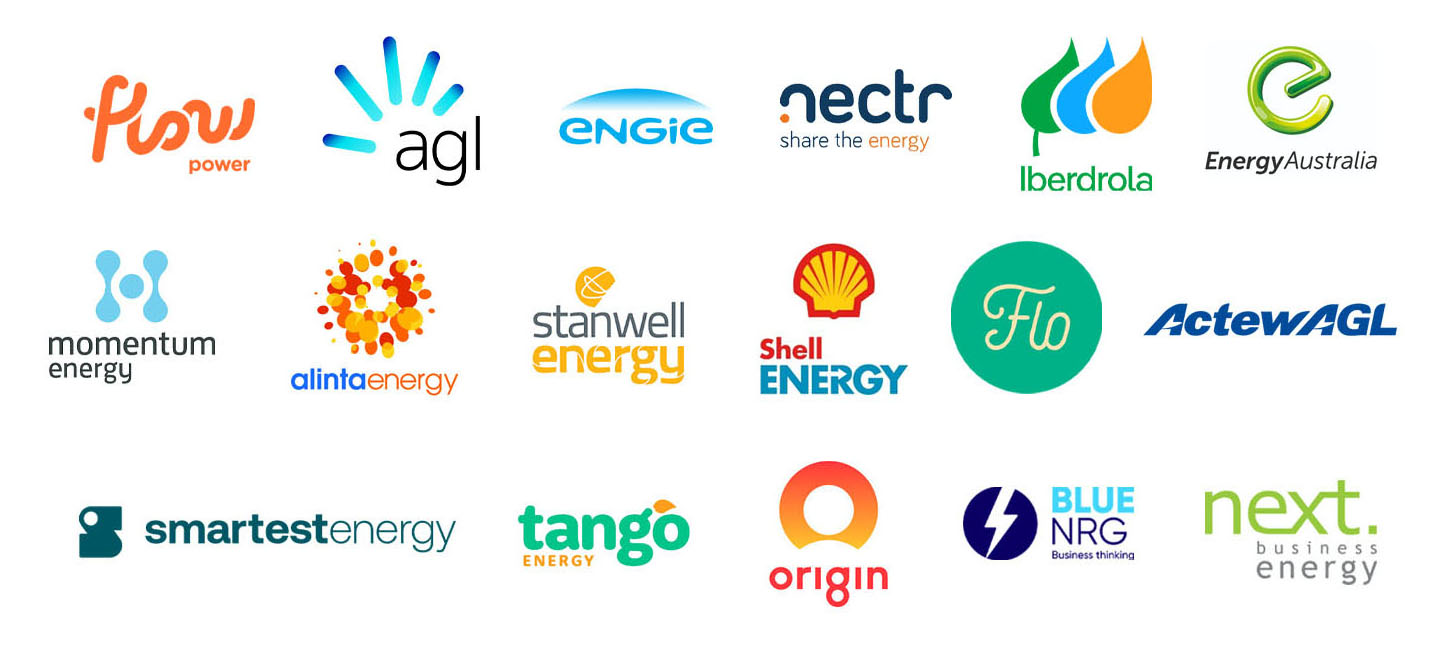
Market Commentary
Electricity spot prices tumbled dramatically in September 2024 compared to the previous month of August while wholesale futures remained stable thanks to cool temperatures, low demand and abundant renewables flowing into the grid.
The drop in spot prices is par for the course at this time of the year but a new strategy implemented by AGL has opened the floodgates for renewables to enter the market at peak times.
Old dogs learn new tricks in coal generation
AGL learned the new strategy to nullify the inertia factor, which means a long spin-up and wind-down period when switching coal plants on and off.
The strategy was developed in the UK and that knowledge was shared with AGL, which can now ramp up and wind down the Bayswater coal-fired power station within 10 minutes and 50 minutes respectively.
The total shutdown of coal power stations in the daytime trough of the demand curve caused by a glut of daytime rooftop solar means that commercial-grade renewable energy can flood into the grid at a very cheap price.
Coal can then ramp back up before the evening peak demand without causing damage to units and still being profitable.
Businesses going to market to forward purchase electricity as calendar year draws to a close
There is also a lot of activity in the wholesale futures market as the calendar year draws to a close. Many businesses and industrial energy users are going to the market to make forward purchases of wholesale electricity while prices are relatively soft.
It is worth observing that businesses can go to the market through tender to secure a new deal in advance, even if their current electricity contract is still in effect.
More renewable energy records set
AGL’s successful trial of “two-shifting” coal units at Bayswater signals a potential shift towards greater grid flexibility, allowing more wind and solar generation.
Renewable energy continues to break records on Australia’s main grid, with renewables hitting a new peak of 74.3% of total electricity generation early in October, dominated by rooftop solar (44%).
States like South Australia have exceeded 100% renewable energy at certain times while Queensland reached 75% renewable share for the first time.
South Australia has now overtaken Tasmania in renewable energy penetration.
Data from OpenNEM shows that `72.5 per cent of South Australia’s electricity demand has been met through wind and solar in the two and a bit months of the new financial year, including a 79.4 per cent share of wind and solar in the month of August alone.
7 Gigawatts of renewable capacity to be added in 2024
Australia is on track to add over 7GW of new renewable energy capacity in 2024, driven by strong investment in large-scale wind and solar and continued growth in rooftop solar.
The Clean Energy Regulator’s report shows that 1.8 GW of large-scale projects reached final investment decisions in the first half of 2024, surpassing last year’s total.
An estimated 3-4 GW of large-scale capacity will be approved this year, alongside 3.1 GW of rooftop solar. Energy minister Chris Bowen praised the progress but emphasised the need to maintain momentum to reach 82% renewables by 2030 and achieve net-zero targets by 2050.
New South Wales grants licence for Renewable Energy Zone
The New South Wales government has granted an operator’s licence to the ACEREZ consortium, the partnership between ACCIONA, Cobra, and Endeavour Energy, to build the transmission system for the Central-West Orana renewable energy zone (REZ), advancing the project to connect 4.5GW of new wind, solar, and storage.
The consortium, selected by EnergyCo, will construct 240km of transmission lines, costing $3.2 billion.
1.6 GW hour energy storage project underway in Victoria
The installation of the first of 444 Tesla Megapack battery systems is underway at the first stage of the 600MW Melbourne Renewable Energy Hub in Victoria, one of the biggest grid-scale batteries in Australia.
Once completed the project will provide 1.6 gigawatt-hours of energy storage.
The Melbourne Renewable Energy Hub is significant for more than just its size – it is the first project from the State Electricity Commission’s initial $1 billion investment as part of the newly rebooted SEC’s target of 4.5 gigawatts of new renewable energy generation and storage projects.
In addition, a landowner-led solar farm proposed for Victorian coal country has been given the green light by the state planning department.
The Hazelwood North Solar Farm includes a 450-megawatt capacity solar farm and an equally massive 450MW, four-hour big battery.
Australia’s biggest wind projects inject first power into the grid
The two biggest wind projects in Australia have begun injecting their first power into the grid, as they start on what can be a lengthy commissioning process.
MacIntyre will nearly double the wind capacity in Queensland, while Golden Plains will boost Victoria’s wind capacity by around 30 per cent.
The 923-megawatt MacIntyre wind project in Queensland and the 1,330-MW Golden Plains wind project in Victoria will significantly impact their respective state grids.
Climate Change Authority urges Australia to adopt net zero as the “new normal”
A new Climate Change Authority report urges Australia to adopt a zero-carbon mindset as “the new normal” to meet its net-zero emissions target by 2050.
The report outlines how decarbonisation can be achieved through existing technologies, highlighting key sectors that need immediate action: electricity, transport, industry, agriculture, resources, and the built environment.
Electricity generation is expected to shift quickly to wind, solar, and storage, while transport will gradually transition to electric vehicles and carbon-neutral fuels.
Industry will decarbonise through electrification and new technologies, while agriculture and land use will become carbon sinks, absorbing more CO₂ than they emit.
The report emphasises the need for policy ambition, encouraging governments to remove barriers and seize opportunities for decarbonisation.
It calls for more incentives for businesses and investors to embrace low-emission technologies and reduce their carbon footprints.
The authority also warns against waiting for future technologies, stressing the importance of acting now with available solutions.
While the report stops short of recommending new carbon pricing policies, it advocates strengthening existing systems like the safeguard mechanism and Australia’s carbon credit scheme.
The report sets the foundation for further discussions on achieving net zero and the forthcoming 2035 emissions target.
Solar farms could give rise to a sheep-grazing boom
Australia might soon see an interesting boom of “solar sheep rental”, inspired by a successful US model.
In the US, farmers rent flocks to solar farms to graze and manage vegetation, with the industry projected to hit $9.3 billion by 2031. While Aussie farmers are intrigued, tweaks are needed to suit local conditions, like ensuring sheep don’t chew through wires.
Although some Australian farmers already graze sheep under solar panels, formal rental deals aren’t common yet.
However, with interest growing and new guidelines in the works, the idea of sheep munching away under solar panels could be Australia’s next big thing.
Turning wine into solar battery components
To close off this month’s market update, we look at another quirky development in solar battery storage.
Australian researchers from the University of New South Wales have developed a new battery technology using food acids from leftover wine and overripe citrus fruits.
The team discovered that these acids could be used to create environmentally friendly, powerful anodes for lithium-ion batteries. The food acids, including tartaric and citric acids, can be extracted from waste and combined with metals like iron to create sustainable energy storage solutions.
While the team has successfully created a coin-sized prototype and secured a patent, they are now working to scale up the technology for larger applications, such as smartphones and solar storage.
New South Wales
Wholesale Electricity Base Load Futures:
*The ASX has ceased to report on electricity futures prices for the year 2024. As a result, reporting now covers the years 2025, 2026, 2027
Average Movement Summary:
| Avg Rate Movement Since: | 1-Sep-2024 | 1-Aug-2024 | 1-Jul-2024 | 1-Apr-2024 | 1-Oct-2023 | 1-Oct-2022 |
| NSW / ACT – Average | ⇧ 2.21% | ⇩ 1.67% | ⇩ 11.22% | ⇧ 13.49% | ⇩ 6.64% | ⇩ 20.47% |
New South Wales electricity futures prices for 2025 started the month at $118/MWh, climbing to $123 at the start of the second week of the month, dropping quite sharply to close September at 114/MWh.
Prices for 2026/27 followed the same trend. Prices have dropped significantly since the crisis in October 2022 and are $11/MWh cheaper than the same period last year.
Start comparing current market offers and make your procurement process a breeze. Take the first step and get started here!
Commentary:
- New South Wales spot prices dropped dramatically from $174/MWh to $58/MWh.
- Electricity spot prices in September 2024 are lower than they were in September 2023, when the average price was $64/MWh.
- September was an unusual month for spot pricing patterns in NSW. There 3 instances of high pricing with one close to the market cap at $17,307. There were also many incidences of negative pricing which evened out the significant drop from the previous month. The bulk of trading took place at around the $50/MWh mark. Incidents of negative pricing increased to around 2000, with a maximum low of -$65/MWh.
- Renewables shares in September 2024 climbed sharply from 28% of the energy mix to 41.5%. Reliance on gas dropped from 2.6% to 1.5%. Coal contribution dropped substantially from 69% to 57% of the generation mix.
- Battery contribution dropped from 0.2% of the state’s energy mix to 0.07%, costing an average of $165/MWh. Gas generation dropped from $206/MWh to $156/MWh. Renewables dropped from an average cost of $105/MWh to $39/MWh, and coal dropped from $139/MWh to $79/MWh.
Start comparing current market offers and make your procurement process a breeze. Take the first step and get started here!
Victoria
Wholesale Electricity Base Load Futures:
*The ASX has ceased to report on electricity futures prices for the year 2024. As a result, reporting now covers the years 2025, 2026, 2027
Average Movement Summary:
| Avg Rate Movement Since: | 1-Sep-2024 | 1-Aug-2024 | 1-Jul-2024 | 1-Apr-2024 | 1-Oct-2023 | 1-Oct-2022 |
| VIC – Average | ⇩ 0.12% | ⇩ 3.64% | ⇩ 10.51% | ⇧ 12.39% | ⇩ 3.36% | ⇩ 18.18% |
Victoria futures prices opened the month at $73/MWh, climbing to $175/MWh, closing where they started at $73/MWh. Prices for 2026 and 2027 followed the same pattern but at a cheaper cost.
Electricity prices have come down significantly since the crisis in October 2022 and are exactly the same price compared to the same period last year.
Start comparing current market offers and make your procurement process a breeze. Take the first step and get started here!
Commentary:
- Victorian average spot prices dropped even more drastically than NSW from $143/MWh to $17/MWh
- Electricity spot prices are $9/MWh cheaper than in the same period for 2023 when they were just $26/MWh.
- Victoria’s spot pricing was very calm and flat during September. The highest spot price was only $282/MWh. The bulk of trading occurred around the $15/MWh mark.
- Incidents of negative pricing increased to around 4000 with a low of -$367/MWh.
- The share of renewables generation climbed from 33% to 43%. Coal generation dropped from 61% to 57%. Gas dropped sharply from 7.2% to 0.3% of the generation mix.
- Battery supply accounted for 0.4% of electricity, and generation cost an average of $65/MWh. The average cost of renewables dropped massively from an average of $120/MWh to just $6/MWh. Coal cost an average of $31/MWh and gas dropped by 50% from $250/MWh to $125/MWh.
Queensland
Wholesale Electricity Base Load Futures:
*The ASX has ceased to report on electricity futures prices for the year 2024. As a result, reporting now covers the years 2025, 2026, 2027
Average Movement Summary:
| Avg Rate Movement Since: | 1-Sep-2024 | 1-Aug-2024 | 1-Jul-2024 | 1-Apr-2024 | 1-Oct-2023 | 1-Oct-2022 |
| QLD – Average | ⇧ 1.85% | ⇧ 0.24% | ⇩ 7.18% | ⇧ 12.95% | ⇧ 2.76% | ⇩ 4.92% |
Queensland futures electricity prices for 2025 opened at $101 at the start of September, climbing to $108/MWh closing off the month higher at $104/MWh. Prices for 2026 and 2027 followed the same trend but at a cheaper cost.
Electricity prices have come down since the crisis in October 2022 but are $3/MWh costlier than the same period last year.
Start comparing current market offers and make your procurement process a breeze. Take the first step and get started here!
Commentary:
- Queensland electricity spot prices dropped from $130/MWh in August to $49/MWh at the end of September.
- Queensland spot prices are slightly costlier than they were in September 2023, when the average price was $50/MWh.
- Queensland experienced two extreme pricing events at $17,500 and $17,401. There were around 3,000 instances of negative pricing with a low of -$801/MWh. The bulk of trading occurred at the $35/MWh mark.
- Renewables in Queensland have performed poorly in 2024 but have picked up in the second half of the calendar year. Renewables share increased from 27% to 32.5%. Coal generation dropped from 64% contribution to 61%. Gas dropped from 8.8% of the energy mix to 5.6%.
- Batteries supplied 0.1% of total generation. Battery energy average costs dropped from $291/MWh to $155/MWh. Gas averaged a cost of $955/MWh, coal $64/MWh and renewables dropped from $61/MWh to $6/MWh.
South Australia
Wholesale Electricity Base Load Futures:
*The ASX has ceased to report on electricity futures prices for the year 2024. As a result, reporting now covers the years 2025, 2026, 2027
Average Movement Summary:
| Avg Rate Movement Since: | 1-Sep-2024 | 1-Aug-2024 | 1-Jul-2024 | 1-Apr-2024 | 1-Oct-2023 | 1-Oct-2022 |
| SA – Average | ⇩ 0.56% | ⇩ 0.64% | ⇩ 2.90% | ⇧ 23.42% | ⇩ 14.75% | ⇩ 22.28% |
As usual, South Australia’s wholesale electricity futures prices for September 2024 displayed a different trend to other states, due to its different energy mix, of which the majority are renewables and the rest gas.
2025 futures started the month at $105/MWh, dropping through the month to $103/MWh, climbing slightly to close the month at $104/MWh. Prices for 2026 and 2027 were initially significantly cheaper.
Prices have come down substantially since the crisis in October 2022 and are $6/MWh costlier than last year.
Start comparing current market offers and make your procurement process a breeze. Take the first step and get started here!
Commentary:
- SA’s average electricity spot prices dropped significantly from $149/MWh in August to $80/MWh in September 2024.
- Electricity spot prices are still almost double the price than the same period last year when they averaged $41/MWh.
- Notorious for pricing volatility, SA experienced two instances where pricing hit $17,499/MWh, just shy of the market cap. There were a further 18 instances where pricing was above $10,000/MWh and 30 instances close to or above $10,000/MWh.
- Around 3000 negative pricing incidents were recorded during July 2024 with four incidences of pricing falling to -$354.
- Renewables climbed significantly from 67% of generation to 85.5%. Conversely, gas generation shrank from 31%, to 17% of the generation mix.
- Battery contributed 0.4% and averaged a cost of $478/MWh. Gas cost an average of $261/MWh, and renewables dropped from an average of $8.70/MWh.
Take Control of Your Energy Costs
Spot prices climbed across the National Energy Market, except in New South Wales, due to low renewable output and unplanned generator outages. For the fourth consecutive month, low wind, solar, and hydro output caused prices to spike in Queensland, South Australia, and Victoria.
Depending on your business’s risk appetite, now could be a good time to secure a new energy contract.
Act now! Reach out to one of our experienced energy consultants today and gain valuable insight into the potential costs that may lie ahead. Don’t wait, take control of your energy expenses now!
We hope you have found our electricity market update for May 2024 informative and helpful. We understand that these are challenging times and we are here to support you. If you would like to delve deeper into the energy market’s previous months, you can find our monthly energy market reviews here.
Why Choose Us?
Expert Advice: Our team of energy consultants has in-depth knowledge of the energy market and can provide tailored advice to suit your business needs.
Cost Savings: Learn how to reduce your electricity costs and improve your business’s energy sustainability.
Proactive Planning: Stay ahead of market changes and make informed decisions with our comprehensive market updates.
Contact our team for advice on reducing electricity costs and improving your business’ energy sustainability. We are here to assist you and explore your options together.
Explainer: Why we focus on Wholesale Futures Prices
Wholesale Futures Price: This reflects what the market expects wholesale electricity spot rates to be in future periods. The offers that commercial and industrial (C&I) customers receive via Leading Edge Energy are closely correlated to wholesale prices on the ASX Energy futures market; this is why we focus on these prices in our commentary.
Spot Price: This represents how much the spot market is charging for electricity currently based on demand and supply. Spot prices go up when demand is high and supply is tight. You can view live Spot Prices here.
You can learn more about the difference between wholesale electricity futures and spot prices in our blog section.
Disclaimer: The information in this communication is for general information purposes only. It is not intended as financial or investment advice and should not be interpreted or relied upon as such.
We source, analyse, compare and rank commercial, industrial and multisite energy quotes. Obligation Free.
Chat with one of our experienced consultants today and get the insights your business needs to help manage the risks associated with volatile electricity and natural gas markets. Our energy procurement service is obligation-free and provides a time-saving way of securing lower energy rates from our panel of energy retailers.

Get advice from our Energy Management Consultants

Ewen Beard
Sales Manager
Get in Touch
Feel free to call or e-mail us. Or just fill in the form below and we’ll contact you for an obligation-free discussion.
Are you ready to save on business energy costs?
Get Started
Leading Edge Energy is proud to be a signatory of the National Customer Code for Energy Brokers, Consultants and Retailers.